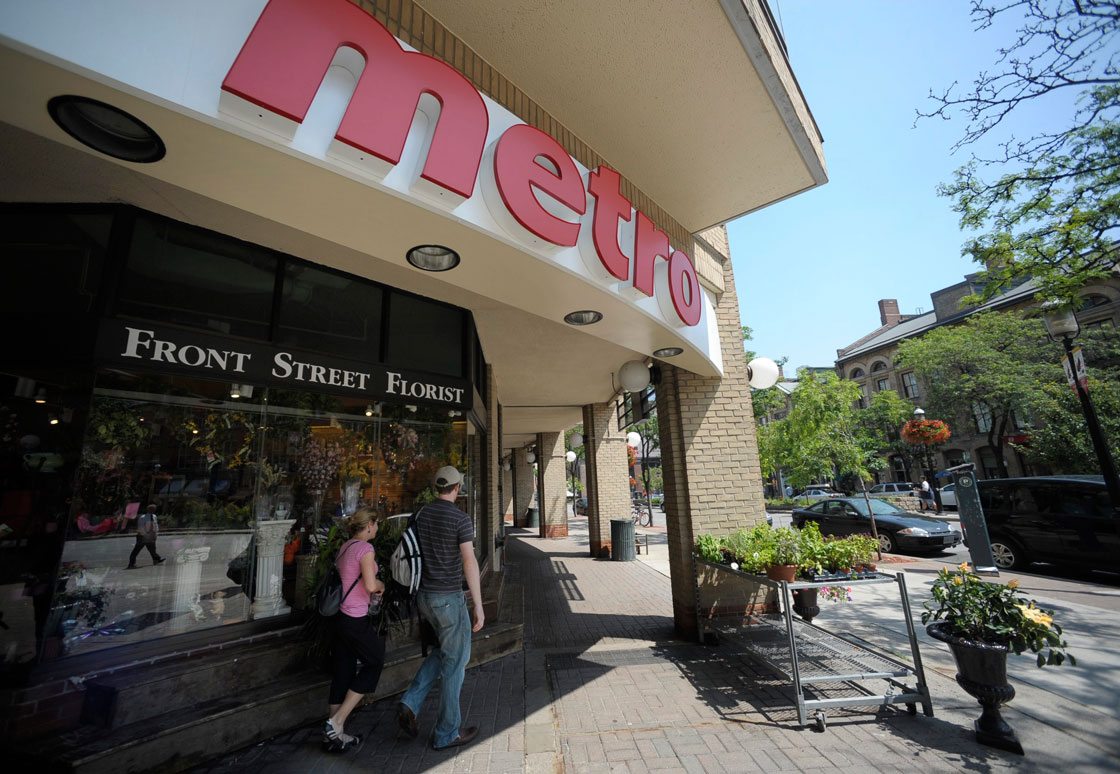On Montreal’s South Shore, the suburb of Sainte-Julie appears to hold a glimpse into the future of the supermarket – if you can afford it.

For the rest of us, we may have to settle for the discount chain down the street.
In a Sainte-Julie plaza is where Metro Inc. has established a spiffier supermarket with a lush array of fresh produce and attentive store staff among other enhancements.
“It has all the bells and whistles of what we want in an upscale Metro,” Eric La Flèche, the head of the major grocery operator said Wednesday.
But checkout bills in the Sainte-Julie store as well as at four other locations around Montreal and one pilot project in southern Ontario will come at a slight premium.
That’s the price of their higher-end experience and product offerings. For those who can’t afford it, meanwhile, Metro has also been busy re-dedicating other locations under its discount banner, Food Basics.
READ MORE: Luxury retailers, discounters winners of widening income gap this year
The move to cater to either higher- or lower-end shoppers isn’t unique to Metro — experts say the grocery business, like the broader retail market place in Canada, is segmenting along widening income lines: Those with big and growing ones, and the rest who have seen generally stagnant wages in recent years.
In Ontario, Metro moved last year to re-brand six locations to its Food Basics banner, while it simultaneously cut deeply into costs at another half dozen stores — moves that included lowering wages for store staffs.
- Budget 2024 failed to spark ‘political reboot’ for Liberals, polling suggests
- Train goes up in flames while rolling through London, Ont. Here’s what we know
- Peel police chief met Sri Lankan officer a court says ‘participated’ in torture
- Wrong remains sent to ‘exhausted’ Canadian family after death on Cuba vacation
La Flèche said Wednesday Metro would be looking at similar decisions this year, if they were warranted.
And if trends persist, they might be.
READ MORE: Grocers look to grind down wages as Walmart, Target take aim
Metro and other conventional grocers who have historically occupied the “mid-market” are seeing more and more customers flock to bigger discount chains, like Walmart Canada and now, Target.
According to industry data provided by Nielsen, the conventional middle segment’s share of all grocery sales slipped nearly four percentage points last year, to 60 per cent, as Walmart pushed deeper into the grocery business and Target was opening new stores.
The mid-market’s share could shrink to half within a handful years, the researcher says.
READ MORE: Walmart makes bigger push into grocery aisle
With the middle shrinking, Metro is re-positioning itself to grow the amount of money high-earners spend with it, experts say. And fast.
Metro is “on track” to upgrade an additional 24 of 357 Metro stores this year across Ontario and Quebec, La Flèche said.
The grocery exec added: “We would like to accelerate some of these renovations … to raise our game in the conventional space.”
WATCH: Must-see tips for shaving dollars off your grocery bill


Comments